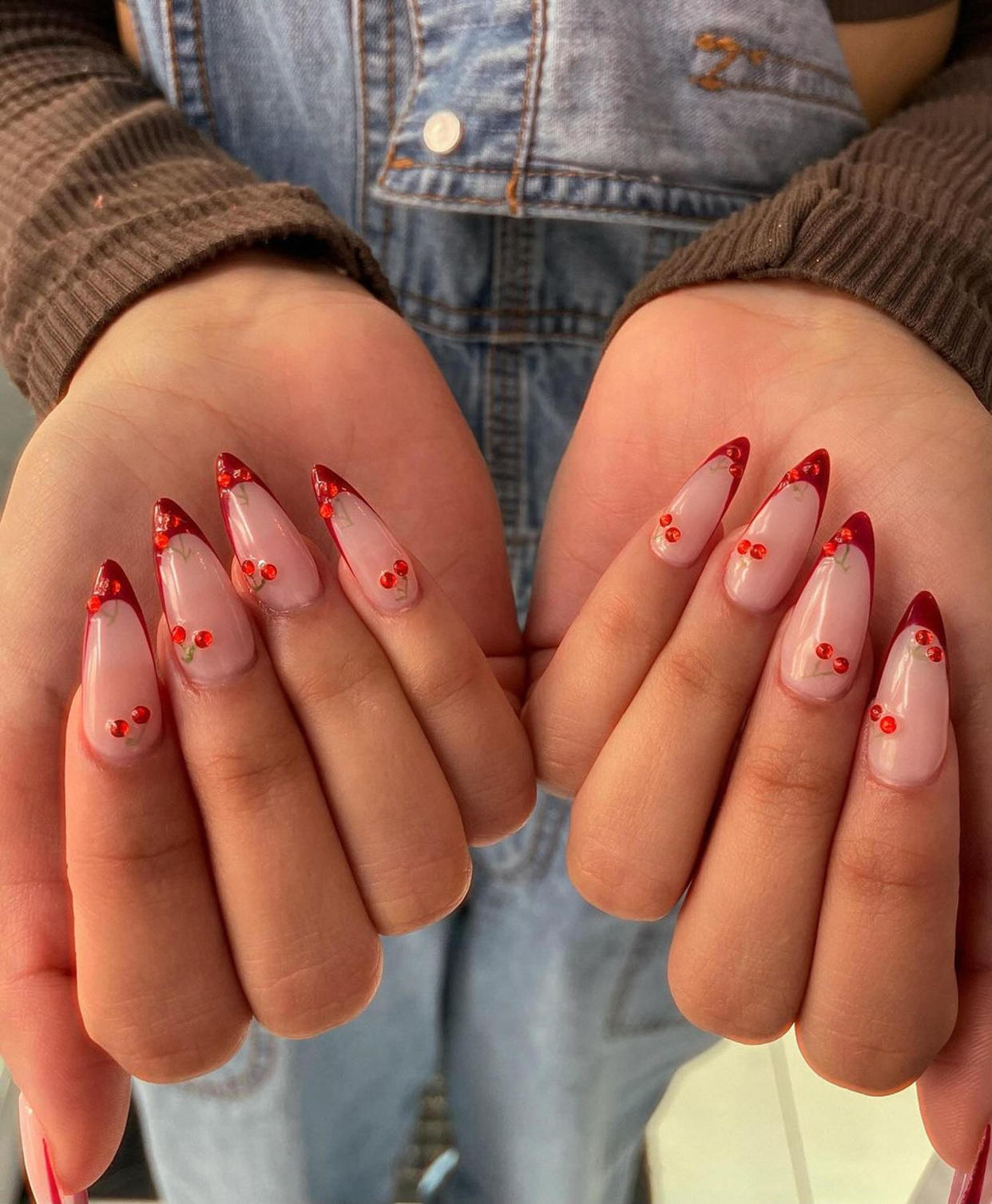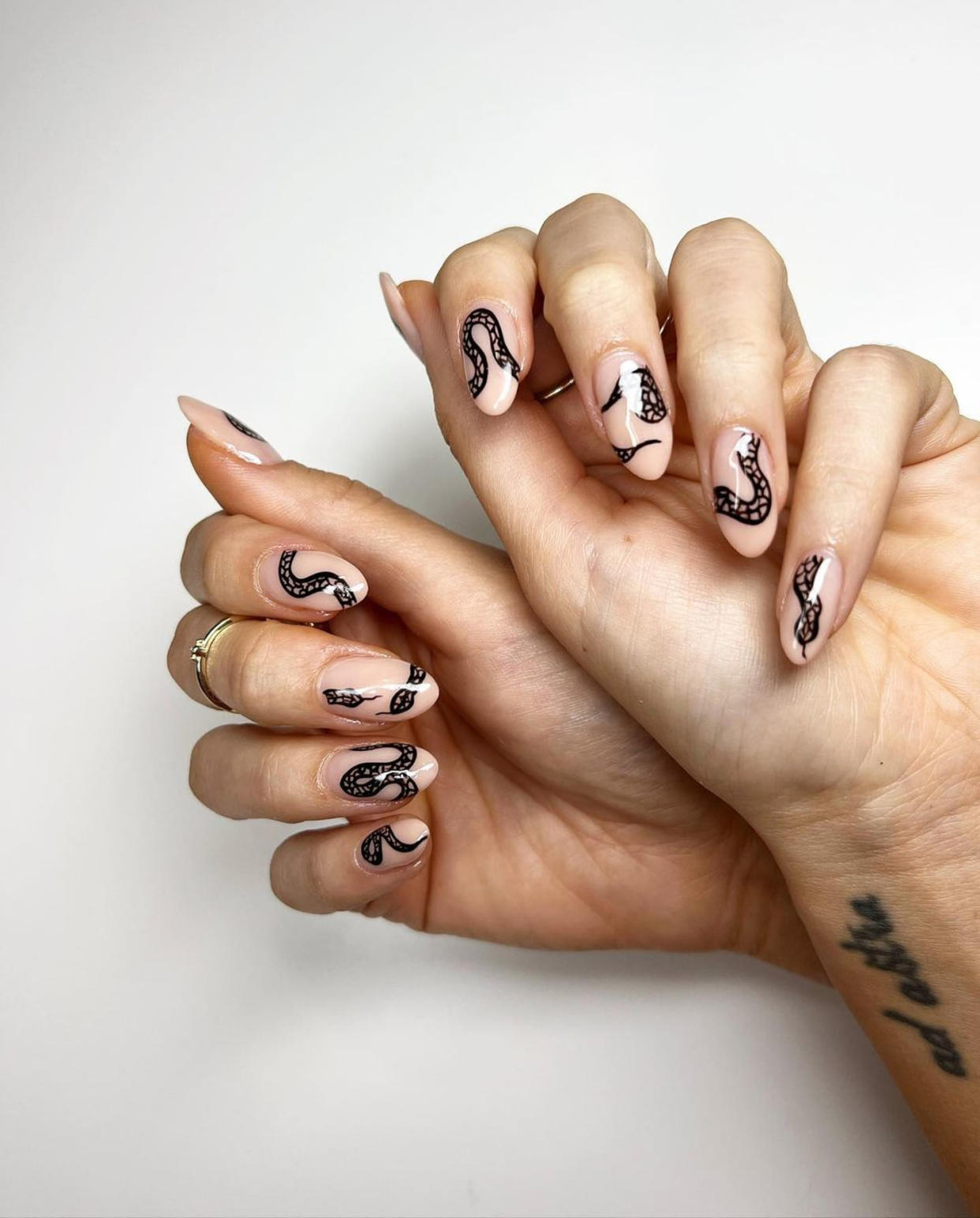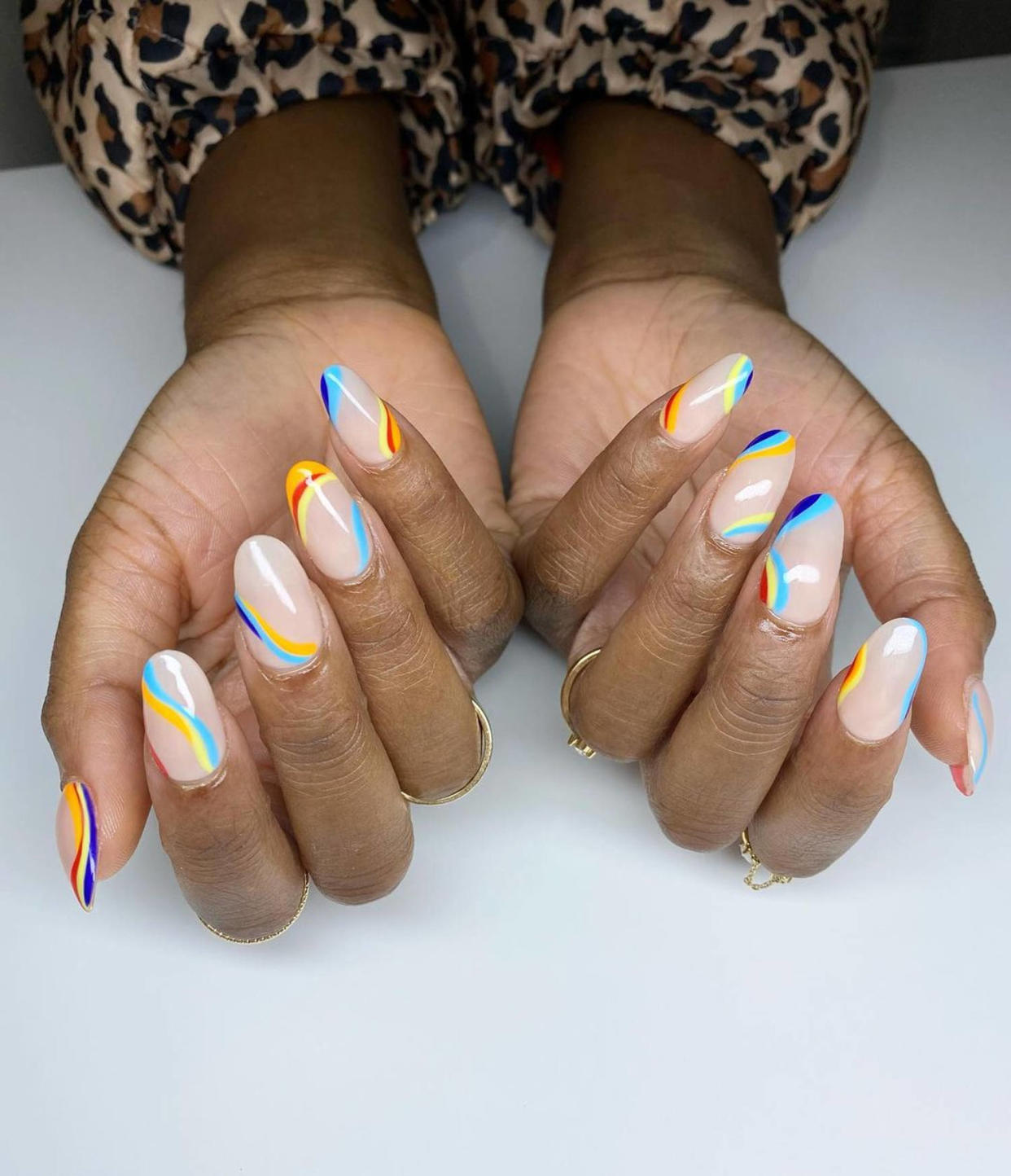How both Black and Vietnamese women have shaped American nail salons
When celebrities walk the red carpet at Hollywood’s biggest events, they show off an unexpected statement piece — their nails. Bold colors, intricate designs and acrylics are spotted on the hands of famous celebrities, from Cardi B to Zendaya.
A-listers aren’t the only ones who use their nails to express themselves. Scroll on Instagram or swipe through TikTok videos and you’ll find nail technicians creating the same glamorous styles for customers in their salons. These trends and the interest in nail design aren’t new — expression through nail art became mainstream decades ago thanks to Vietnamese and Black women who have shaped the American multibillion-dollar nail industry.
As we celebrate both cultures that continue to leave their mark on the fingertips of every generation, read on to learn how the nail art trend made its way into the fabric of American culture.
How did American nail salons develop?
The connection between Vietnamese women and the nail industry is traced back to the 1970s. As the 2018 documentary “Nailed It” explains, the fall of Saigon and the end of the Vietnam War led to many Vietnamese refugees immigrating to the United States. When they arrived, some lived in refugee camps and one is credited with birthing the type of American nail salon that lines streets and shopping centers today.
“Nailed It” shows how actor Tippi Hedren, the star of Alfred Hitchcock’s “The Birds,” traveled to a northern California refugee camp in 1975 called Hope Village. Hedren is described in the documentary as “a great humanitarian who really wanted to help the Vietnamese find a place in the United States.” The women in the refugee camp noticed her nails, so she brought her manicurist, Dusty Coots Butera, to teach 20 of them nail technician skills. She also convinced a beauty school to train the women for free.
Butera spoke to Nails magazine in 2016 about working with the women.
“Tippi told me about these young women and their plight. And I thought, surely, if I could learn to do nails, they could, too. I was not trained to do anything, and I had a child to raise and I was a single mother ... so when I went to teach, I knew what it was like. That’s why it appealed to me,” Hedren said.
Some of the women were interviewed for the “Nailed It” documentary and recounted how they honed their skills from morning to evening. They also expressed their gratitude to Hedren for introducing them to a communal experience that made them feel less lonely and helped them adapt to a new country.
“They became self-sustaining women on their own and that’s pretty much where the Vietnamese nail industry started,” says Kim Pham, a former senior editor at Viet Salon magazine, in the film.
From there, that small community of women spawned more interest in the nail industry.
“Before 1975, the Asian nail salon as we know it didn’t exist,” director Adele Pham says in her documentary. “So how did it go from 20 women to a multibillion dollar industry? By the end of 1975, over 125,000 Vietnamese refugees had settled in the U.S., most in California. And Vietnamese talk. So word spread that nails was the thing to do.”
Adele Pham wasn’t exaggerating. A UCLA essay about Vietnamese-owned manicure businesses in Los Angeles by Craig Trinh-Phat Huynh found that cosmetology schools in Southern California received a large increase in Vietnamese students in the 1980s.
“At one school, Vietnamese comprised about 40% of all students, compared to only 2% only 10 years before,” the report said.
Vietnamese-owned nail salons started popping up all over the U.S., particularly in California, which the Daily Beast deemed “the center of the overseas Vietnamese community,” in 2017, generating an unstoppable industry. The outlet said that Nails magazine reported there were around 130,000 nail salons in the U.S. in 2015 and that 50% of all manicurists working in those businesses were Vietnamese. The magazine also estimated that in California, the percentage was closer to 80.
But the Vietnamese community was not just working in the salons — they owned them.
A UCLA Labor Center study of the nail industry published in November 2018 reported that nail salons were primarily owned and staffed by immigrants and refugees. The study credited Mantrap as one of the first jointly owned Vietnamese and Black nail salons that later became a chain in the 1980s, with salons appearing in Black communities across Southern California. The UCLA Labor Center also found that a majority of the nail salon workforce is Vietnamese women.
With so much interest in nail art, the U.S. nail salon industry’s revenue in 2015 reached $4.4 billion, growing steadily over the years.
Why did the Vietnamese community gravitate toward the nail industry?
Making money wasn’t the only reason the Vietnamese community leaned into the nail industry almost 50 years ago. Kim Pham mentioned the importance of a family-oriented culture in the Vietnamese community in her “Nailed It” documentary. She explained that many refugees used their jobs and money to sponsor family members who still lived in Vietnam.
Decades later, that objective remains. Jenny Tra Nguyen grew up in Vietnam and moved to the U.S. around 2017. She tells TODAY.com that she left her home country and traveled with her dad and one of her siblings to New York City and worked as a teacher. Around 2020, she decided to move to Los Angeles.

She says she realized that a teacher’s salary wasn’t enough to support her family, including two more siblings. She also wanted to sponsor her mom, who stayed behind in Vietnam.
“So I tried to find something else that (would) have better income. It was (during the COVID-19 pandemic) and I went to Instagram and see a lot of nail content there,” she explains. She said she saw the posts getting hundreds and thousands of views so she decided to teach herself how to do nails. She watched clips on YouTube, Instagram and TikTok because the pandemic prevented her from going to school in person.
She earned her license online after six months and started to share photos on Instagram of her work to build a portfolio. She practiced on herself, her fiancé and friends, and sent photos of her work to agencies.
Nguyen says she booked jobs that included collaborations with influencers and celebrity house calls. She lists Paris Hilton, Hailey Bieber, Kourtney Kardashian Barker and actor Lana Condor as some of her other clients, along with companies like Chanel, Converse and Nike.

However, Nguyen noticed that working with celebrities was more about marketing and didn’t help her secure a steady income. So, she opened a salon in downtown Los Angeles called JennPaintt Nail Lounge.
Nguyen says she generated a strong following on social media that translated to actual customers who visited her shop. She began with just one co-worker and ended her first year with eight to 10 employees.
Depending on permit approval, she hopes to open another salon this year, she tells TODAY.com. She also says that 90% of the products used in her salon are her own, called Làmay Beauty.
Since opening JennPaintt Nail Lounge in 2022, Nguyen has achieved astronomical success. CNBC reported last year that Nguyen’s salon brought in over $600,000 in 2022. She tells TODAY.com that her fiancé is in charge of their finances, so she isn’t sure how much she made in 2023 — but she is confident it was more than her earnings in 2022.
While the money is certainly a bonus, Nguyen achieved the main goal she set out to accomplish: relocating her family to the U.S.
“I moved my family over here. My parents and my siblings. They’re all here now,” she reveals. “When the business (was) doing better I knew (I had) the money to sponsor my mom and move my family and help them settle down here.”
She says it took about two years after she moved to Los Angeles to bring her family to her.
“I think (my success) is driven from helping my family and to come and achieve something in this country because we grew up poor in Vietnam, small village, you know. So we never (had) this type of opportunity,” she says.
Nguyen continued, “Freedom in the U.S. is to have so much more opportunity. They call it the ‘American dream.’ If you work hard, you can achieve something here.”
How did the Black community make acrylics a fashion statement?
The strong communal aspect that has helped Vietnamese people thrive in the nail salon industry can be compared to how the Black community has also embraced the nail art industry. A trip to a nail salon, just like a visit to a hair salon or barber shop, is a treasured experience in Black culture.

Although “Nailed It” focuses on the impact the Vietnamese American community has had on nail salons, it also calls attention to the way Black women set current nail trends and reintroduced ancient techniques to mainstream culture, particularly the use of acrylics.
“Black women were early adopters of sculpture nails and set off nail art in the 80s,” Adele Pham said in her film.
Nail extensions weren’t a new invention. The Guardian noted in a 2021 article that archaeologists have found Egyptian mummies, possibly dating to 5,000 B.C., “with gilded nails and henna-tinted fingertips” and that Indian women used henna on their nails around the same time. The British newspaper also reported that members of the Ming dynasty in China wore crimson nails with long extensions.
Modern-day acrylics that celebrities tend to show off at star-studded events, like the Grammys and the Met Gala, were created by accident. The first mention of it, according to Nails magazine, was in 1957 when Dr. Fred Slack Jr. was working in his dental laboratory and repaired his cut thumbnail using aluminum foil and dental acrylic.
About a decade later, African American model Donyae Coles wore acrylics on the cover of Twen magazine in 1966, Refinery29 reported, and many Black celebrities of the disco era, including Donna Summer and Diana Ross, sported the look.

Legendary Olympic sprinter Florence Delorez Griffith Joyner, known as Flo-Jo, showed off her nail designs and iconic style on the track, and reporters noticed. A journalist for the Chicago Tribune who was covering the U.S. Olympic track and field trials in 1988 wrote, “The glamorpuss who once wore 4-inch, curved, tiger-striped fingernails simply broke world records as if they were going out of style.”
The importance of nail salons in the Black community
Hip-hop artists have also rocked acrylics. Lil’ Kim wowed in her “money nail” acrylics in Junior M.A.F.I.A’s 1995 “Get Money” music video. In 2017, The Washington Post reported that the nail art was featured in an exhibition at the Museum of Modern Art called “Items: Is Fashion Modern.”
That museum-worthy design was created by manicurist Bernadette Thompson, who tells TODAY.com how she made a name for herself in the nail industry.
Thompson says she grew up being fascinated with her mom’s naturally long nails. One day, after having a difficult interaction with her boss, she decided to quit her corporate job. She called her mom who suggested she pursue her interest in nail art. Thompson had already been painting her friends’ nails for years and was experimenting with basic acrylics. She also taught herself how to add extensions and shaped her own tools because she didn’t have salon-style brushes.
Around 1993, she enrolled in nail school and attended night classes for three months.
“And after that, I said, ‘I’m going to open a nail salon,’” she recalls. Her friend had a hair shop and she rented a small space above it. She remembers being located next to Ruff Ryders Entertainment’s studio and seeing Eve, DMX and the hip-hop group The Lox coming and going from their recording sessions in Yonkers, New York.
From there, Thompson built a loyal clientele. “We all knew each other. You know, Yonkers is very segregated,” she explains.
She describes her first salon as “ghetto fabulous.”
“And it was so busy,” she adds. “I mean there was times where I stayed there 24 hours, easy.”
She also later found that her business was a safe space for her customers. “It wasn’t just the nail salon, but it was really about the networking,” she says. “Some of those women, I found out later, were being abused at home and that was their outlet. It was so many things. And I just fell in love with it.”
But her salon only lasted about six months. Thompson says she grew up being friends with Mary J. Blige and her sister, LaTonya. Thompson painted marble nails for LaTonya one day and the “Real Love” singer noticed. She asked Thompson to paint her nails, marking the beginning of Thompson’s career as a celebrity manicurist.
She spent five years working with hip-hop artists before landing a collaboration with Louis Vuitton around 1998.
“I did the nails to mimic the bags. And I think that’s how that trend kind of started it all the way,” Thompson says. “There weren’t even any nail salons in France…they weren’t really into nails at that time.”
She began working in fashion and started mixing her own signature colors.
She mentions Madonna, Jennifer Lopez and Lady Gaga as some of the artists she has worked with over the years.
But, Thompson realized that she was mostly getting paid in free beauty products and needed more money to support her son. She launched the Bernadette Thompson Nail Collection line, making her the first Black person to own a global nail company, she says. She later sold the business to a competitor around 2001.
With a successful career in the industry, she uses her position to help the next wave of manicurists. Now, when she collaborates with celebrities or brands, she says she advocates for more women of color on set, including hairdressers and makeup artists.
Although she no longer works in salons, Thompson looks back at her start in the nail industry fondly. She says the experience highlighted the importance of nail design within her inseparable Yonkers community and in Black culture.
“It changes your mood, nails. It just makes you feel better. It gives you confidence,” she shares. “That’s one of the things that it did for us who didn’t always have that because we couldn’t afford Louis Vuitton bags. So our nails became our accessories.”
This article was originally published on TODAY.com
